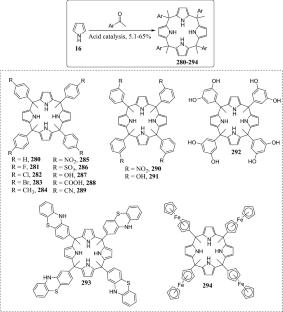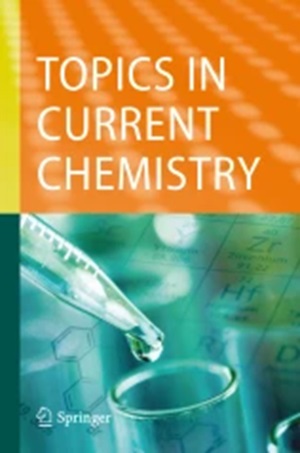Aryl- and Superaryl-Extended Calix[4]pyrroles: From Syntheses to Potential Applications
Abstract
The incorporation of aryl substituents at the meso-positions of calix[4]pyrrole (C4P) scaffolds produces aryl-extended (AE) and super-aryl-extended (SAE) calix[4]pyrroles. The cone conformation of the all-α isomers of “multi-wall” AE-C4Ps and SAE-C4Ps displays deep aromatic clefts or cavities. In particular, “four-wall” receptors feature an aromatic polar cavity closed at one end with four convergent pyrrole rings and fully open at the opposite end. This makes AE- and SAE-C4P scaffolds effective receptors for the molecular recognition of negatively charged ions and neutral guest molecules with donor–acceptor and hydrogen bonding motifs. In addition, adequately functionalized all-α isomers of multi wall AE- and SAE-C4P scaffolds self-assemble into uni-molecular and supra-molecular aggregates displaying capsular and cage-like structures. The self-assembly process requires the presence of template ions or molecules that lock the C4P cone conformation and complementing the inner polar functions and volumes of their cavities. We envisioned performing an in-depth revision of AE- and SAE-C4P scaffolds owing to their importance in different domains such as supramolecular chemistry, biology, material sciences and pharmaceutical chemistry. Herewith, besides the synthetic details on the elaboration of their structures, we also draw attention to their diverse applications. The organization of this review is mainly based on the number of “walls” present in the AE-C4P derivatives and their structural modifications. The sections are further divided based on the C4P functions and applications. The authors are convinced that this review will be of interest to researchers working in the general area of supramolecular chemistry as well as those involved in the study of the binding properties and applications of C4P derivatives.
Graphical Abstract


 求助内容:
求助内容: 应助结果提醒方式:
应助结果提醒方式:


